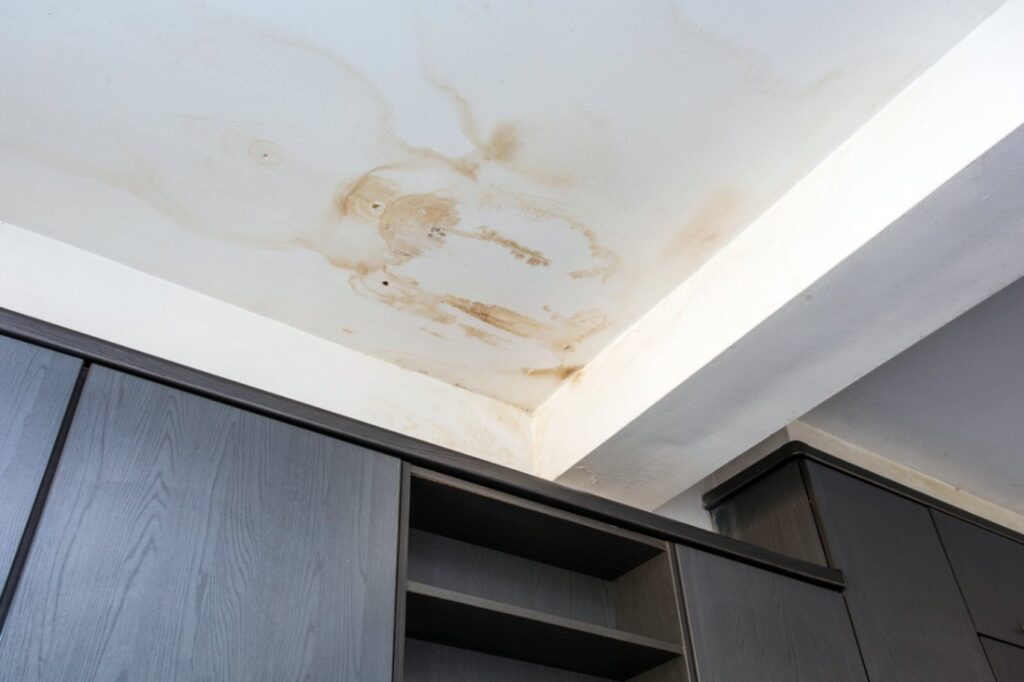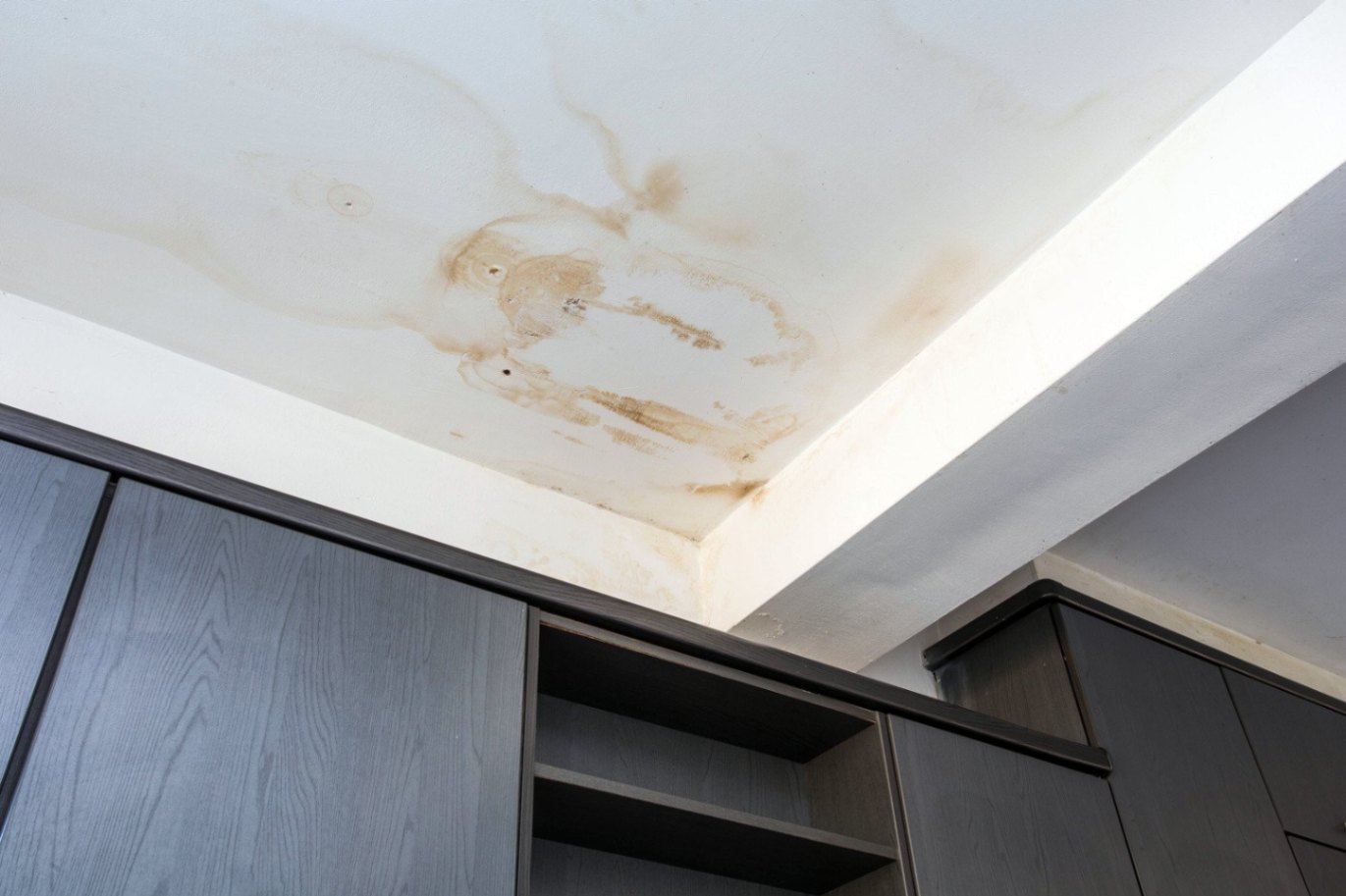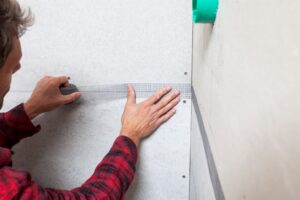Have you noticed your ceiling texture turning yellow? This is a common issue that can happen for various reasons, such as smoke damage or moisture buildup. It’s important to figure out the cause before fixing the problem. Ignoring it won’t help, and over time, the yellowing can get worse. Knowing the right cleaning methods and repair techniques can help you restore your ceiling to its original condition. Let’s take a closer look at how to effectively deal with this issue.

Key Takeaways:
-
Yellowing may be caused by smoke damage, moisture buildup, or environmental factors like cooking or tobacco smoke.
-
Inspect for water damage, leaks, or poor ventilation, which may be contributing to the discoloration.
-
Clean yellowed ceilings with a mild soap solution or diluted vinegar; always test in a small area first.
-
Repair any ceiling damage before repainting with high-quality, stain-resistant ceiling paint for lasting results.
-
Keep proper ventilation and clean your ceiling regularly to prevent future yellowing.
Common Causes of Yellowing Ceiling Texture
If you’ve noticed your ceiling texture turning yellow, you’re not alone. This discoloration is often caused by smoke damage, especially if there has been a recent fire or heavy smoking indoors.
Smoke particles can settle into the ceiling texture, leading to that yellowish tint. Moisture buildup is another major cause. When humidity levels rise or leaks happen, moisture can seep into the ceiling, encouraging mold growth that discolors the surface.
Understanding these common causes is key to addressing the issue effectively. By tackling the root problems—smoke damage and moisture buildup—you can restore your ceiling’s appearance and stop further yellowing in the future.
Identifying the Source of the Discoloration
To fix yellowed ceilings, it’s essential to figure out where the discoloration is coming from.
Start by checking your texture materials. If you used a water-based product, it could yellow over time when exposed to moisture. Look for signs of water damage or leaks, as these are common causes of yellowing.
Also, think about environmental factors like smoke from cooking or tobacco. Indoor air pollutants and poor ventilation can make the problem worse.
Check if the ceiling has been painted with an oil-based paint, as this type of paint may also yellow with age.
Finding the source of the discoloration will help you decide the best way to restore your ceiling.
Effective Cleaning Methods for Yellowed Ceilings
You can often clean yellowed ceilings with the right cleaning methods.
Start by mixing warm water with mild dish soap. Use a soft cloth or sponge to gently wipe the surface, being careful not to soak it.
For more stubborn stains, try a diluted vinegar solution or a cleaner designed for ceiling maintenance. Always test any cleaner in a small, hidden spot first to make sure it won’t damage your texture.
After cleaning, rinse with a cloth dampened in clean water to remove any residue. Regular cleaning will help keep your ceiling looking fresh and prevent yellowing from happening again.
Repairing and Repainting Your Ceiling
Though yellowed ceilings can be frustrating, repairing and repainting them can restore their original look. Start by checking for any damage—if there are cracks or peeling, you’ll need to repair those first. Fill any holes or cracks with a suitable patching compound and sand the surface smooth.
Once the repairs are done, clean the area thoroughly to remove dust and debris. When it comes time to repaint, choose high-quality ceiling paint that matches the room’s style. Use a roller to apply even coverage, and consider using a primer if the yellowing is severe.
Let the paint dry completely before applying a second coat for durability. This will help restore your ceiling’s brightness and charm.
Preventative Measures to Avoid Future Yellowing
To prevent yellowing in the future, it’s important to maintain proper ventilation in your home.
Make sure kitchen and bathroom exhaust fans are working well, and always use them while cooking or showering. Keeping an eye on your ventilation can help catch any issues before they get worse.
You should also schedule regular ceiling cleaning to remove dust and grime that can contribute to yellowing. A gentle solution of mild detergent and water can keep your ceiling looking fresh.
Another tip is to use high-quality, stain-resistant ceiling paint after repairs. This extra layer of protection will help reduce the chances of yellowing over time.
Frequently Asked Questions
Can Yellowing Ceiling Texture Affect Indoor Air Quality?
Yes, yellowing can point to underlying problems like mold or smoke, which may release pollutants into the air. Fixing yellowing can help improve indoor air quality and reduce health risks related to these contaminants, making your home a healthier place to live.
How Often Should I Check My Ceiling for Discoloration?
You should inspect your ceiling for discoloration every few months. Regular checks will help you spot issues early, preventing bigger problems down the road. Keeping an eye on your ceiling ensures a healthier living environment and maintains its appearance.
Is Yellowing More Common in Certain Climates?
Yes, yellowing is more common in humid climates, where high humidity levels and temperature changes create perfect conditions for mold and mildew. Regular checks in these environments can help you catch issues before they get worse.
Are There Specific Paints to Prevent Yellowing?
Yes, there are paints specifically designed to prevent yellowing. These paints are formulated to resist discoloration. Regular ceiling maintenance, along with using these paints, will keep your ceiling looking fresh for longer.
Does Yellowing Occur in All Types of Ceiling Textures?
Yellowing can happen in many types of ceiling textures, including acrylic textures and popcorn ceilings. Factors like moisture, smoke, and aging contribute to discoloration, so it’s important to keep proper ventilation and avoid exposure to harmful elements.
Conclusion
In summary, dealing with yellowing ceiling texture involves identifying the cause, whether it’s smoke or moisture, and tackling it directly. By cleaning, repairing, and repainting with quality materials, you can restore your ceiling’s appearance. Regular ventilation checks and upkeep will help prevent yellowing in the future. With these steps, you can keep your ceiling looking fresh and bright, ensuring a comfortable and welcoming space for years to come.




